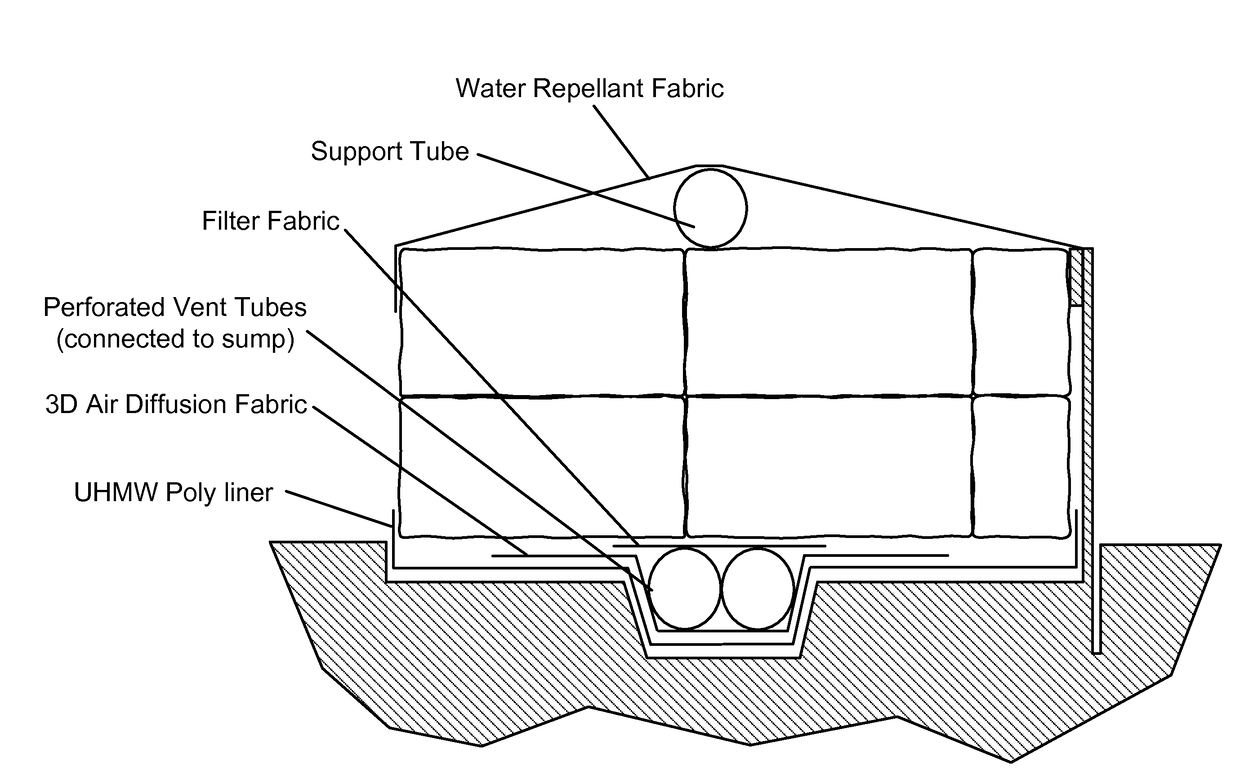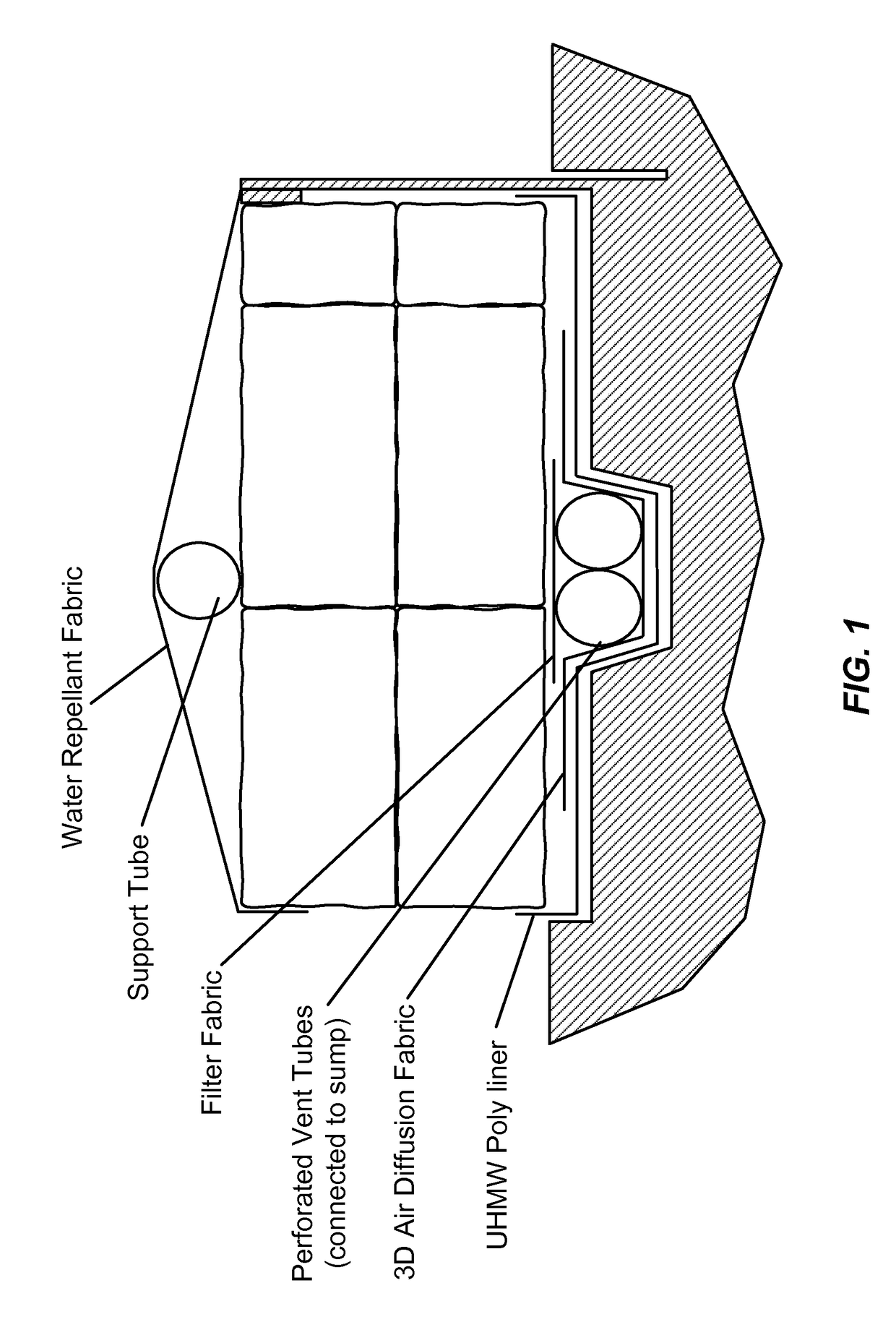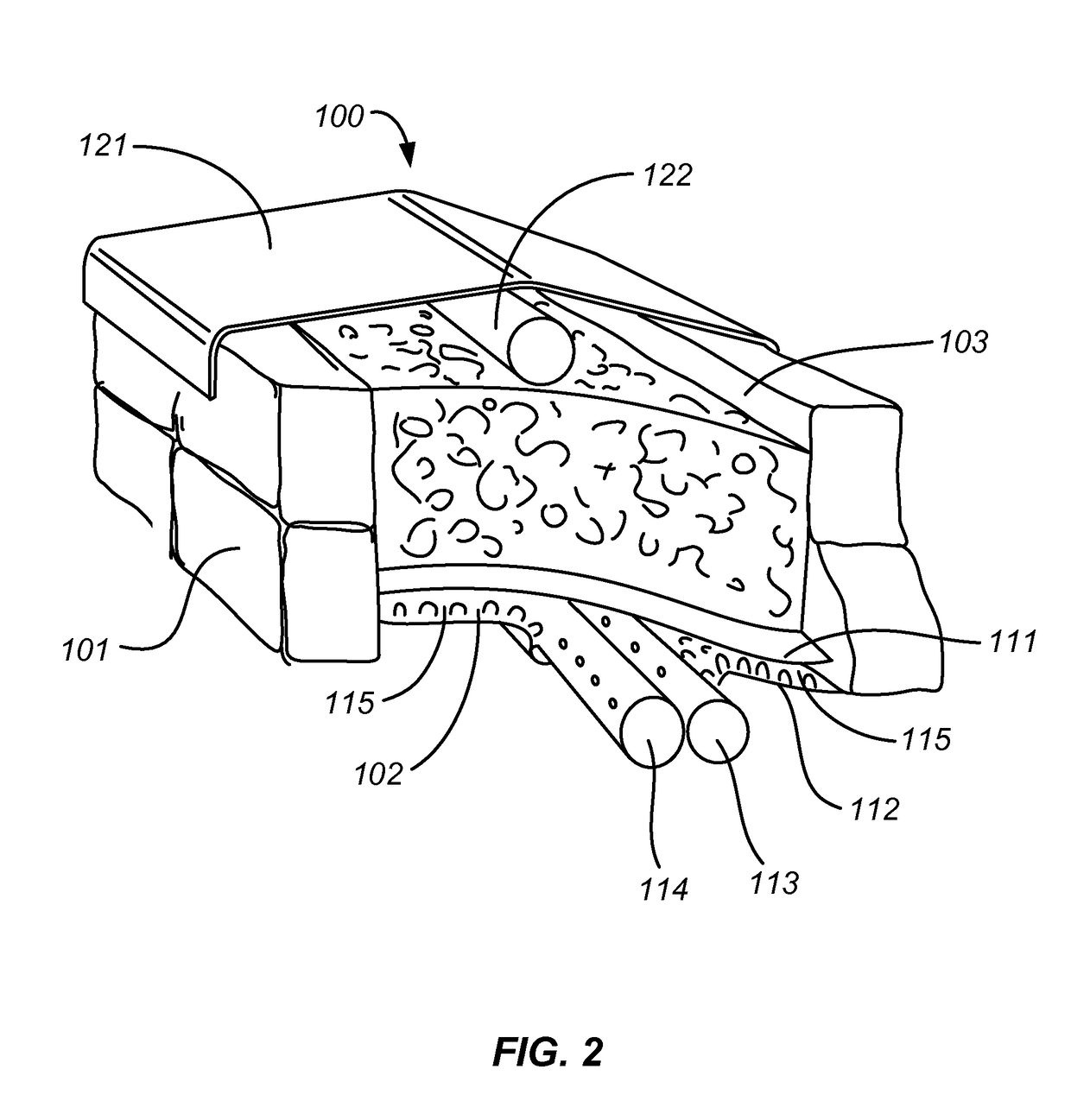Composting system and method
a technology of composting system and composting method, which is applied in the field of composting system and method, can solve the problems of easy transportation and small volume of components, and achieve the effects of promoting the growth of aerobic bacteria, and reducing the density of air
- Summary
- Abstract
- Description
- Claims
- Application Information
AI Technical Summary
Benefits of technology
Problems solved by technology
Method used
Image
Examples
examples
[0099]Waste Collection
[0100]Sanitary waste can be collected from 20 housing units equipped with ULF toilets every 2 weeks. Minimal handling is then required for compost pile construction. The sanitary waste is mixed with a defined amount of greenwaste (food waste, wood chips, sawdust, straw) using a modified, agricultural vertical feed mixer. This improves moisture content and aerobic structure. The mixer includes scales to measure the correct ratios of components and its output conveyor allows placement of the mixed material directly into the composting cell, thus eliminating handling and minimizing operator exposure to the waste. The pile is then continuously monitored for temperature, oxygen and moisture, and periodically sampled for microbial community and pathogen analysis. Thermophilic temperatures are typically achieved within the first 3-4 days and persist for at least one month before removal of finished compost material that is certified pathogen-free. This complies with e...
PUM
| Property | Measurement | Unit |
|---|---|---|
| volume | aaaaa | aaaaa |
| temperature | aaaaa | aaaaa |
| density | aaaaa | aaaaa |
Abstract
Description
Claims
Application Information
 Login to View More
Login to View More - R&D
- Intellectual Property
- Life Sciences
- Materials
- Tech Scout
- Unparalleled Data Quality
- Higher Quality Content
- 60% Fewer Hallucinations
Browse by: Latest US Patents, China's latest patents, Technical Efficacy Thesaurus, Application Domain, Technology Topic, Popular Technical Reports.
© 2025 PatSnap. All rights reserved.Legal|Privacy policy|Modern Slavery Act Transparency Statement|Sitemap|About US| Contact US: help@patsnap.com



